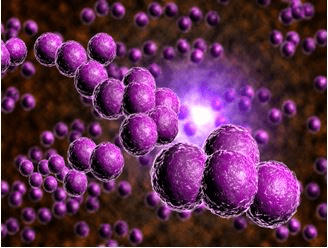ANALYSIS OF THE ANTIBIOGRAM PROFILES OF BIOFILM FORMING STAPHYLOCOCCUS AUREUS AND ESCHERICHIA COLI
Keywords:
Biofilm formation, Escherichia coli, multi-drug resistance, Staphylococcus aureus, tissue culture plateAbstract
Background and Objectives: Bacteria that attach to the surfaces and produce polymeric matrix resulting in the biofilms formation are involved in a wider range of human infections. Biofilms forming Staphylococcus aureus and Escherichia coli are considered to be highly antibiotics resistant. This study aimed to analysis the antibiogram profile of biofilm forming S. aureus and E. coli in Mukalla city, Hadhramaut,Yemen.
Methods: Sixty clinical isolates of S. aureus and E. coli were isolated from different clinical samples, and identified by standard bacteriological methods, then subjected to biofilm formation detection by tissue culture plate (TCP) method. The antibiotics susceptibility test was performed by disc diffusion (Kirby-Bauer) method. Chi-square test was used to analyze the data and p value< 0.05 was taken as significant.
Results: Among the total isolates S. aureus and E. coli, TCP method detected 55% of isolates as strong, 25% as moderate and 25% as weak/non-biofilm producers. Biofilm forming of S. aureus developed significantly higher degrees of antibiotic resistance of amoxicillin/clavulanic acid100%, ceftazidime 95.8%, cefotaxime62.5%, cefadroxil 45.8%, ciprofloxacin 41.7% and ceftriaxone 25% with significant statistics correlation the resistance of amoxicillin/clavulanic acid and ceftazidime and bacterial biofilm production (p-value< 0.05). The rates of antibiotics resistance biofilm E. coli were 100%, 91.7%, 75%, 70.8%, 66.7%, 62.5% and 33.3%for amoxicillin/clavulanic acid, cefadroxil, cefotaxime, ceftazidime, ceftriaxone, ciprofloxacin and co-trimoxazole respectively with statistically significant correlation of cefadroxil resistance (p-value < 0.05).
Conclusion: TCP method showed that S. aureus and E. coli isolates have high degree of biofilm forming ability. A high antibiotics resistance found in biofilm producers isolates than non-biofilm producers.

Peer Review History:
Received: 3 October 2021; Revised: 9 November; Accepted: 12 December; Available online: 15 January 2022
Academic Editor: Dr. Nuray Arı , Ankara University, Turkiye, ari@ankara.edu.tr
, Ankara University, Turkiye, ari@ankara.edu.tr
Reviewers:
 Dr. Wadhah Hassan Ali Edrees, Hajja University, Yemen, edress2020@gmail.com
Dr. Wadhah Hassan Ali Edrees, Hajja University, Yemen, edress2020@gmail.com
 Dr. Tamer Elhabibi, Suez Canal University, Egypt, tamer_hassan@pharm.suez.edu.eg
Dr. Tamer Elhabibi, Suez Canal University, Egypt, tamer_hassan@pharm.suez.edu.eg
 Dr. Rawaa Souhil Al-Kayali, Aleppo University, Syria, rawah67@hotmail.com
Dr. Rawaa Souhil Al-Kayali, Aleppo University, Syria, rawah67@hotmail.com
 Rola Jadallah, Arab American University, Palestine, rola@aauj.edu
Rola Jadallah, Arab American University, Palestine, rola@aauj.edu
Downloads

Published
How to Cite
Issue
Section

This work is licensed under a Creative Commons Attribution-NonCommercial 4.0 International License.









 .
.